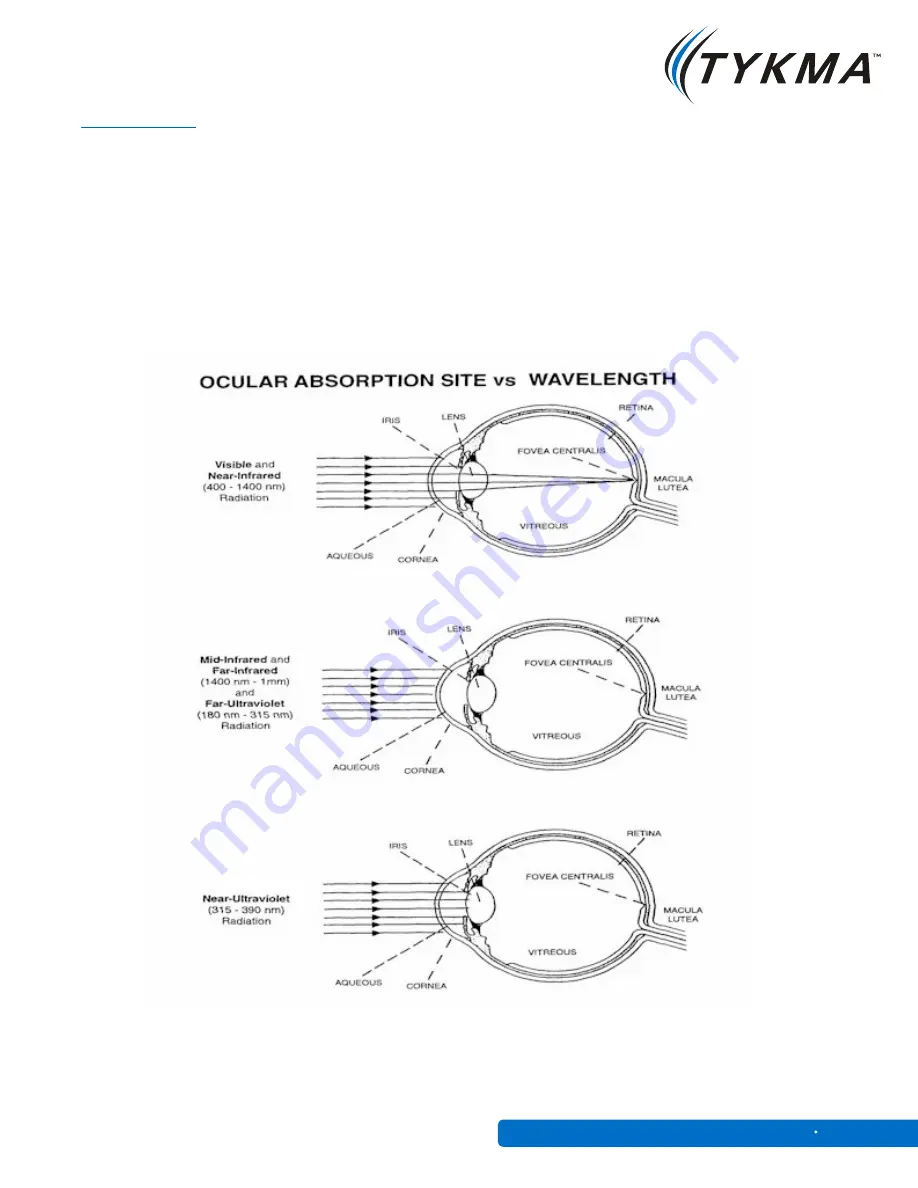
Laser Safety
Laser Radiation Effects on the Eye - Visible Light and Infrared-A (400-1400 nm)
The marking laser most commonly used in this category is the Q-switched Nd:YAG laser, which
operates at a typical wavelength of 1,064 nm. Eye exposure to this laser beam is more hazardous
since at this wavelength the laser beam is transmitted through the eye and focused onto the retina.
Exposure may initially go undetected because the beam is invisible and the retina lacks pain sensory
nerves. Visual disorientation due to retinal damage may not be apparent to the operator until
considerable thermal absorption has occurred. Since the energy is concentrated by the eye's lens,
the strength of the laser beam that is required to damage the eye is significantly less. Figure 2.
shows various laser wavelengths and their effect on the eye.
L A S E R S F O R M A R K I N G
Figure 2.
Zetalase
™
7
General Manual SE 1








































